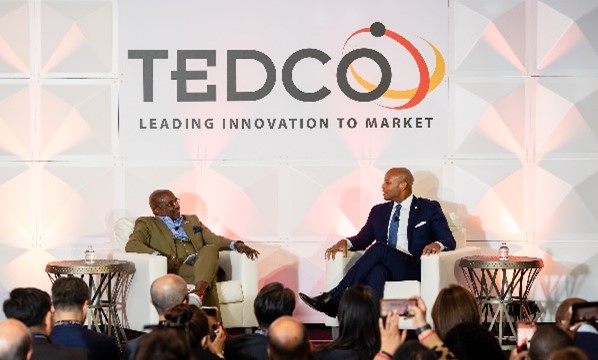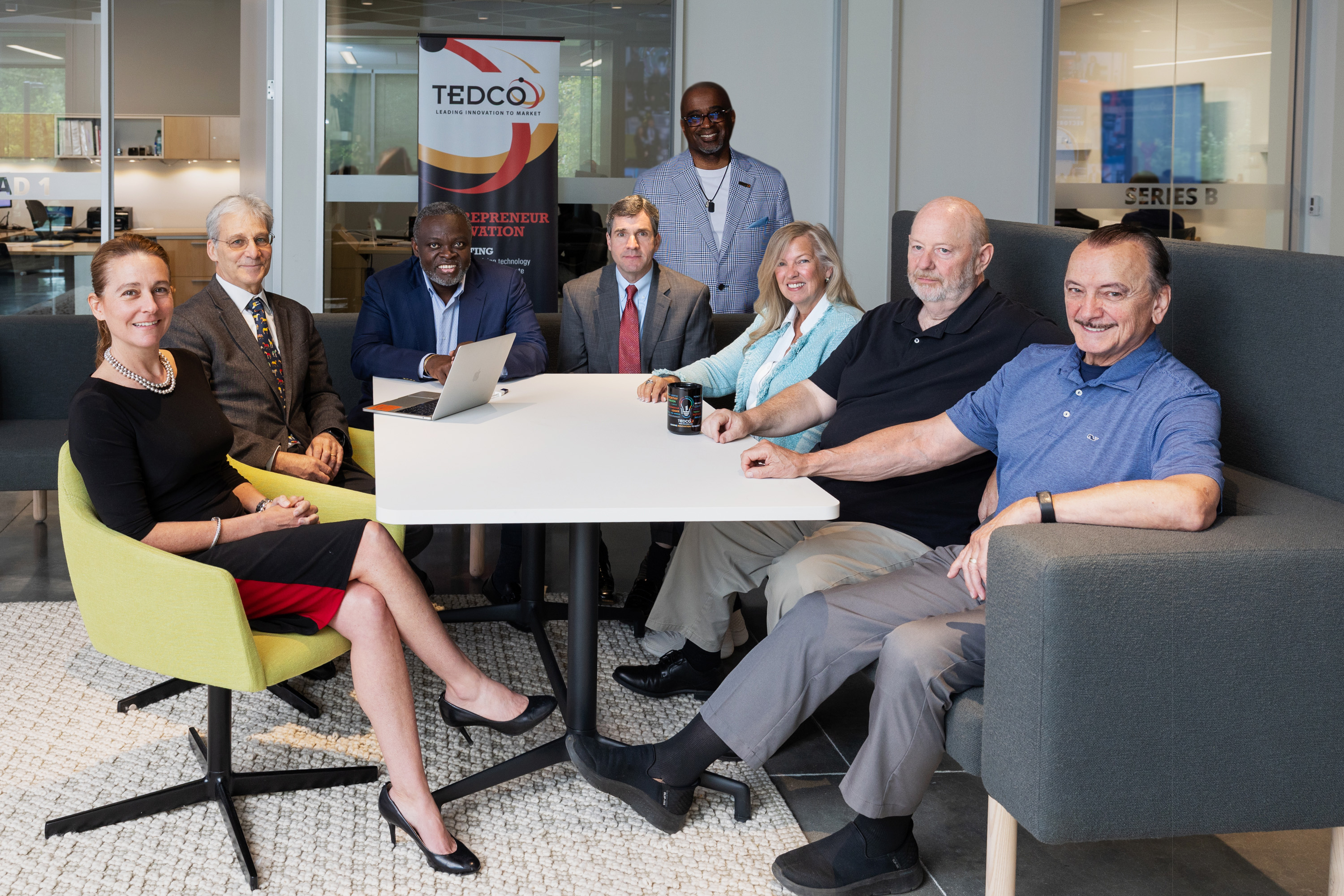
The State of Maryland appears to have everything needed to be one of the country’s leading innovation ecosystems. It has a strong research and development (R&D) landscape with its universities spending over $4 billion on research annually, according to an annual licensing survey conducted by the Association of University Technology Managers. It has the most federal laboratories of any other state in the country and twice as many as all states except California according to the Federal Laboratory Consortium, conducting billions of dollars in research. It is the second most educated state in the country, and it is home to one of the leading technology-based economic development organizations in the nation, TEDCO (the Maryland Technology Development Corporation), which makes dozens of investments each year in early-stage companies and provides a variety of other valuable resources to entrepreneurs. Yet, with all its unique resources, Maryland isn’t perceived as one of the leading innovation economies in the country along with Silicon Valley, Boston, Texas and North Carolina. To that, I ask, why?
A few months ago, I attended an economic development conference in Arizona with this question fresh in my mind. As one might suspect with these types of conferences, there were many conversations about building innovation economies and ecosystems.
The term “ecosystem building” has become a popular term in economic development circles, often getting overused to the extent that I believe its true meaning gets lost in the hype. In any case, it was apparent to me that everyone was working to crack the code on building an ecosystem in their region. With all the discussion, I hoped that there might be some best practices that I could learn and bring back to Maryland; I wanted to learn what specific steps we could take to join the ranks of the leading innovation economies in the U.S.
In my effort to learn these best practices, I asked several questions to better understand what guiding principles other regions were using to grow their economies. In response, I got a lot of vague answers including responses like, “it takes connections,” or “you have to leverage assets.” There seemed to be no clear methodology, which led me to consider two possibilities.
First, each ecosystem is so different that there is no “one way” to grow it, meaning, a singular answer doesn’t exist. And while I understand this philosophy to an extent, I have a hard time fully accepting that there are no best-practice strategies general enough to apply to most environments.
The second possibility is that no one really knows the best ways to do this efficiently. Sure, there are areas like Massachusetts, Silicon Valley and North Carolina that serve as exemplars of this practice. In these cases, significant investments and decades-long adherence to a focused strategic vision were critical, but in the absence of such resources and long-term strategic execution, it was not clear what other best practices are effective. Moreover, how do you get started, regardless of the resources available?
Defining Principles
I was recently part of a team focused on developing a proposal to the National Science Foundation’s (NSF) Regional Innovation Engines solicitation. This was a very large federal funding opportunity (up to $160 million over 10 years) intended to advance regional innovation ecosystems in a specific industrial sector. I thought the requirements for these proposals and their review criteria might provide some insight into what the NSF sees as being needed for building an ecosystem. The Notice of Funding Opportunity for the Engines grant identified key elements the NSF thought were needed for creating a successful innovation ecosystem. I combined the NSF’s requirements with some of the insights discussed at the conference and derived the following principles: a unified vision and strategy, a source of innovation and commercialization, and stakeholder engagement in active cross disciplinary networks.
Unified Vision and Strategy
Creating a unified vision and strategy can be a challenge, especially for a large region. Such a plan needs not only complement the region’s competitive assets and have ubiquitous support from across the ecosystem, but it must also be clearly defined and focused.
Executing a strategy requires commitment and investment. Since regions, whether led by government or industry, have limited capital, investments must be aligned with the strategic area of focus – one cannot invest in everything with limited resources. Unfortunately, a focused strategy can be perceived as exclusionary as certain industry segments or subregions are left out when considering the short-term results. Those feeling excluded must be convinced that there is an indirect benefit to their acceptance of, and participation in, the strategy by way of a stronger regional economy driven by the sectors included in the focused strategy.

This persuasion requires strong leadership within the ecosystem. An example of the leadership and focus needed to support such a task can be seen in Maryland where Governor Wes Moore’s selection of Lighthouse Industries offers a clearly defined and focused strategy. Moreover, he has been vocal about the need for systematic and focused investment to grow the State’s economy despite budget challenges. To be successful, stakeholders in Maryland need to maintain this vision, stay focused and execute according to long term strategic priorities that extend beyond Governor Moore’s time in office.
Source of Innovation and Commercialization Infrastructure
It sounds obvious, but an innovation ecosystem needs a source of innovation; this needs to be accompanied by the infrastructure required to move it from the lab to the market. Some of the best sources of technological innovation are research laboratories including those in universities, federal agencies, and industry. This is where Maryland excels; ranked first in categories like federal technology transfer facilities, NIH research and development awards, NIH awards among U.S. colleges and universities and second for federal obligations for research and development.
There is little question about Maryland as a source of research and invention, but ecosystems also need a defined pathway to move new discoveries from the labs to the commercial sector. This requires a variety of resources including entrepreneurs; support infrastructure including incubators, accelerators, start-up studios and sufficient interactions to create a sense of community; and access to various types of capital. Finally, opportunities for merger and acquisition activity in the region, as well as a fertile environment for businesses in general, are also needed. This ensures that companies starting locally have a rationale to stay and grow locally.
Maryland has a strong commercialization infrastructure that includes active technology transfer offices in its universities and federal labs, more than thirty incubator and accelerator programs, and early-stage capital through ’s programs and other local investment funds. However, the state would benefit from more technology-based product companies interacting with early-stage companies, allowing for the creation of greater revenue opportunities and pathways needed for founders and investors to exit their ventures. To engage industry, large companies will need to see value in the innovative small companies growing in their backyard, and for that to happen, the entrepreneurial community needs to embrace the power of storytelling, showcasing their successes to the public.
Workforce Development
Cutting-edge technology companies need a workforce with specialized training for ecosystems to be successful, allowing employees to meet the needs of these companies. And while universities generating innovations are one source of talent, it’s not enough. Businesses need a broad pool of workers to meet organizational demands at all levels – from product development to manufacturing to business and finance. Targeted opportunities for graduates are needed to successfully retain top talent, making community colleges, technical schools, and internships necessary for developing the broad workforce needed.
Ecosystems with long-term strategies also need to ensure they will have a sufficient workforce in 10–15 years. To do this, they must engage with schools at the K-12 levels, enticing students to think about career paths that will train them for future positions. This is especially true in the STEM fields, where children become interested, or disinterested, in the subject matter at an early age.

As an example, Maryland, like most of the country, is facing challenges filling jobs in the cybersecurity field. With 20 thousand to 30 thousand vacancies in this field, we need a strategy that will equip more individuals with the proper training over the next one or two decades. Hence the creation of the Cyber Maryland program and the “Maryland’s Cybersecurity Talent Strategy.”
That aside, Maryland is fortunate to have such a strong workforce development and training infrastructure through various community colleges, universities, and training programs. Even with this strong workforce, the state isn’t slowing down on creating opportunities to grow its workforce. New programs, like TEDCO’s Equitech Growth Fund, are supporting additional workforce development initiatives at all levels.
Stakeholder engagement and Active Cross-disciplinary Networks
While the word, “ecosystem”, is commonly used in association with economic development, it is a term many first learn in biology class. A critical component of an ecosystem, regardless of the context, is the interactivity of the organisms within the environment.
In other words, an ecosystem needs to have interactions between the various organisms (stakeholders) of that community. I would argue that most ecosystems can claim some interactivity between stakeholders; however, it is the scale and quality of that interaction that distinguishes an exemplary network from others.
For successful economic development, there needs to be active participation and commitment by the three pillars of an ecosystem: academia, for research and workforce development; government, for strategic economic priorities and policy; and industry, for creating workforce opportunities, strategic investments, supply chain, and manufacturing. While I can use general terms like academia, industry, and government, the interactions must take place at the personal level, through active networking and through joint strategic initiatives (actions like co-investment, co-sponsorship, collaboration, and more). If one of these pillars does not see value in a unified economic strategy for the ecosystem, it will be difficult to develop a technology-based economy and ecosystem analogous to a three-legged stool with one broken leg.
In Maryland, I believe that this is our greatest challenge. Our state has often struggled with a parochial mindset, rather than a regional one. Thankfully, this seems to be changing for the better; efforts like the Tech Hub initiative led by the Greater Baltimore Committee and the NSF Engine’s program previously mentioned are great examples of this change, bringing together disparate stakeholders across the ecosystem to focus on a regional initiative.
While the described requirements are critical to the creation of an exemplary ecosystem, there is another characteristic that is even more important. It is one of those things that is hard to describe, but you know it when you see it. It is best described as culture. It encompasses the standards, norms, or expectations that are established in a community and are critical to establishing the mindset of individuals in the ecosystem.
An example of impressive entrepreneurial culture is what I saw at Stanford University. During my time in academia, typical conversations at most universities revolved around the next grant opportunity or publication. However, at Stanford, the conversations among faculty centered on when someone was going to start their next company. This type of environment drives an expectation or norm to innovate. The environment influences students, who develop an entrepreneurial mindset and aspire for entrepreneurial careers. Together, the students and faculty create a critical mass of activity that has resulted in the reputation Stanford now holds as a hub for start-up companies and entrepreneurial culture. This is where Maryland needs to make the most improvement to develop and grow its ecosystem. But it also brings forth the question – how does one change the culture in an ecosystem?

Maryland’s ecosystem – Strong with room for improvement
As someone who has been involved in Maryland’s innovation ecosystem for over thirty years, I have seen tremendous change toward a more entrepreneurial mindset in our region. I have seen that disruptive movements, like the collaborations taking place across the state, need strong leadership and intensive, widespread stakeholder engagement. Movements like this typically start slow and speed up exponentially as more people become engaged, so the process takes time and requires patience.
As the movement grows, we need to continue to invest, engage, and work on our culture across the region. We need to think big, support a focused strategy, take risks and celebrate our successes.
Maryland has a strong ecosystem that includes most of the critical components needed for exemplary growth, and we are developing and refining the areas that need to improve. There is no quick and easy solution to grow an ecosystem, but we are in a much better position than many other states or regions in the country. I ask that stakeholders in our region continue to collaborate and we, at TEDCO, will continue to do our part by leading innovation to market.